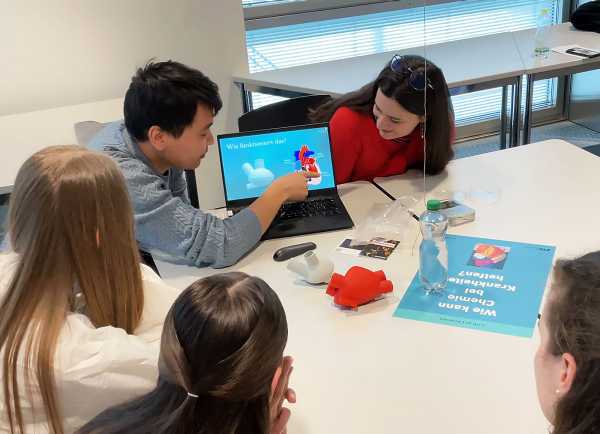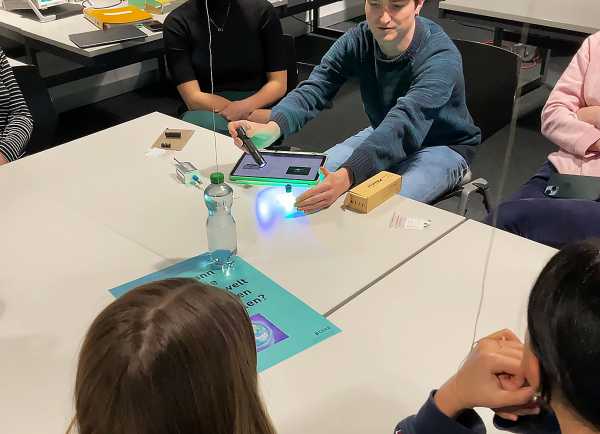Review: Girls Go Chemistry 2024
To celebrate the International Day of Women and Girls in Science in February, D-CHAB, in partnership with EducETH and WiNS, invited interested schoolgirls to look behind the scenes of the department on February 14, 2024. Here is a review of an afternoon full of bright, colorful, sustainable, and applied chemistry, from nanocrystals to artificial hearts.
February 14, 2024, was a Valentine's Day that Marie and Pierre Curie might have liked: at least at D-CHAB, it was all about the love of chemistry (and had nothing to do with Valentine’s traditions). Thirty schoolgirls, mainly from Zurich and Uster but also from Zug, Aargau, Lucerne, and Graubünden, made their way to the Hönggerberg to learn more about chemistry. They started with a taste of lecture hall air in the HCI building and eagerly awaited what the afternoon would bring.
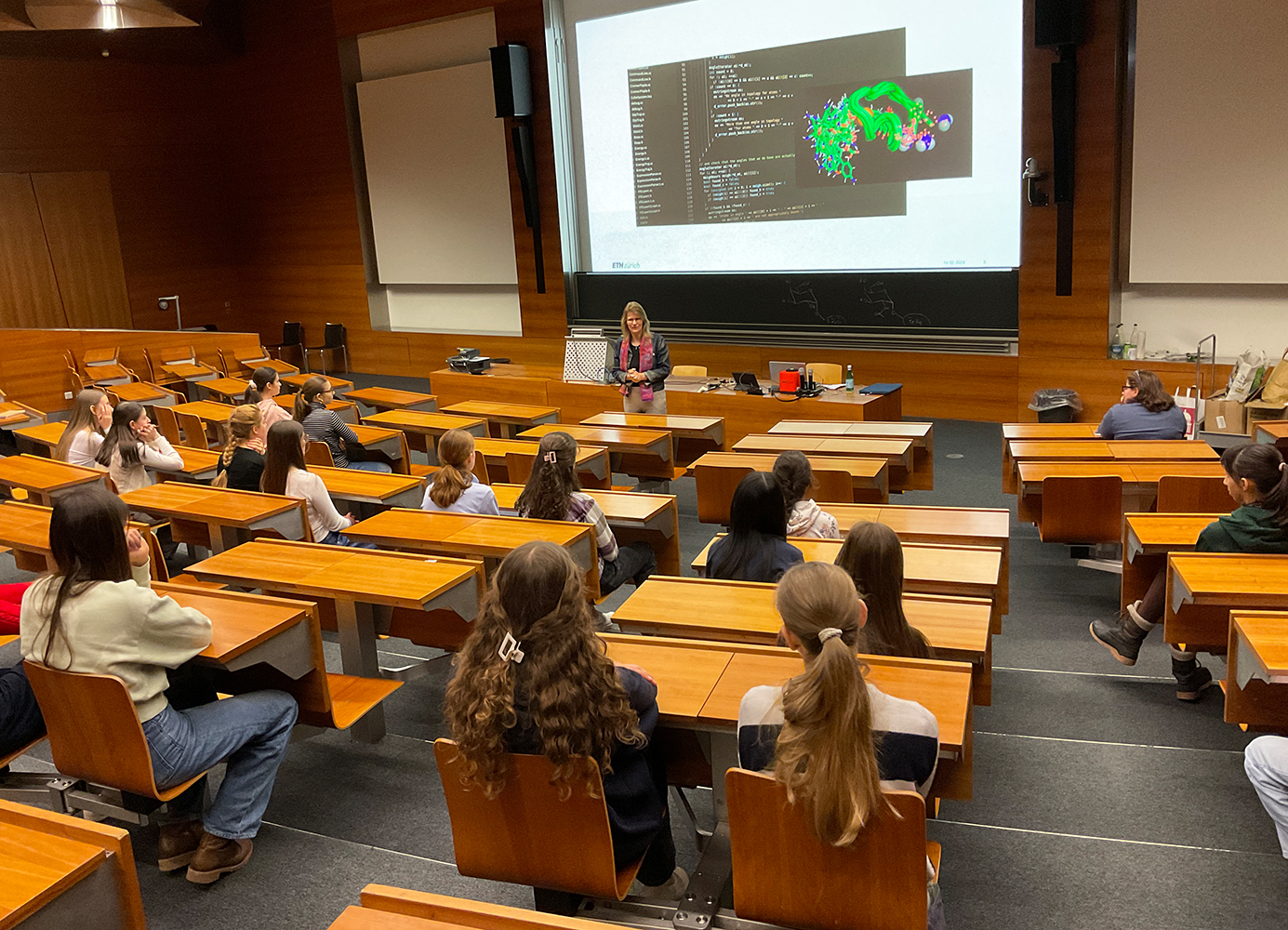
Indeed, there was a lot on the agenda. To mark the annual International Day of Women and Girls in Science in February, the aim was to give 12- to 15-year-old schoolgirls a unique insight into the world of chemistry – early in their schooling, as some of them will soon be choosing their specialization. "Many findings from teaching and learning research show that a stable academic self-concept develops between the ages of 11 and 15," says Ralph Schumacher, Head of the ETH STEM Learning Center and cooperation partner of Girls go Chemistry. "At this age, it has been proven that many girls with above-average intelligence tend to choose linguistic subjects, although they would also have the best prerequisites for the STEM field. It therefore makes sense for ETH Zurich to provide challenging and interesting science courses for this age group. Such offers can support female students in developing their interests."
So, what is chemistry? "Reactions," "compounds," and "substances," speculated the young audience in the lecture hall, some of whom had already encountered the subject. "Diversity," added Professor Helma Wennemers who joined the introductory part of the event. She talked about her path into chemistry and answered questions about research and being a professor ("Tell us more about it!"). However, she didn’t want to reveal details about everyday lab work: “You'll find out in the lab workshops soon!”
 School students working with the haptic device and feeling the force acting on the atoms (Photo: J.Ecker)
School students working with the haptic device and feeling the force acting on the atoms (Photo: J.Ecker)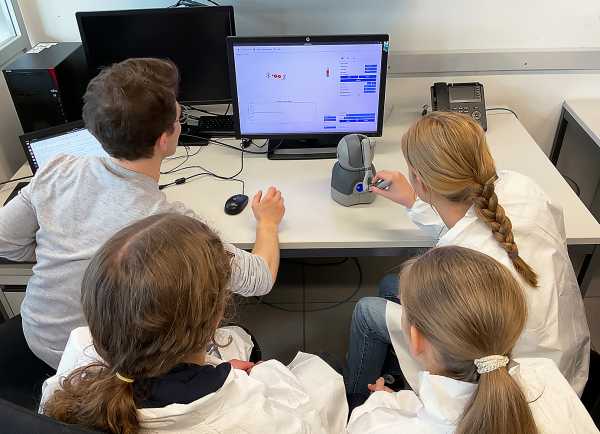 Experiments on optical spectroscopy and luminescence (Photo: J. Ecker)
Experiments on optical spectroscopy and luminescence (Photo: J. Ecker)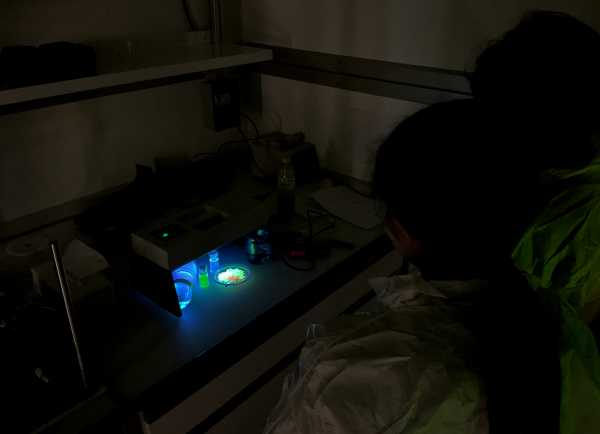 Experiments on electrochemistry (Photo: J. Ecker).
Experiments on electrochemistry (Photo: J. Ecker). Learning more about the lympahtic system via confocal microscope (Photo: Ilirida Mahmudi)
Learning more about the lympahtic system via confocal microscope (Photo: Ilirida Mahmudi)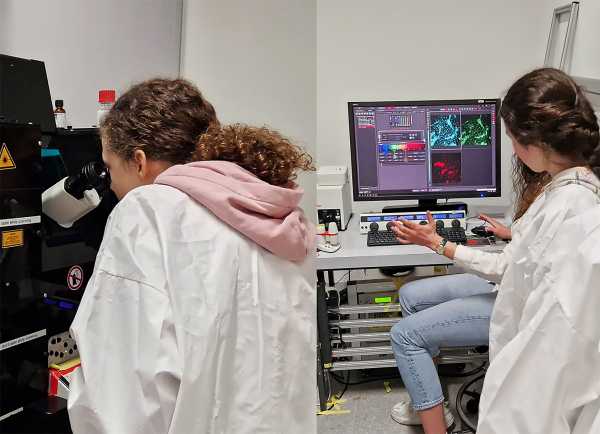 School students learning how to distinguish precious genuine rose oil from counterfeit (Photo: J. Ecker)
School students learning how to distinguish precious genuine rose oil from counterfeit (Photo: J. Ecker)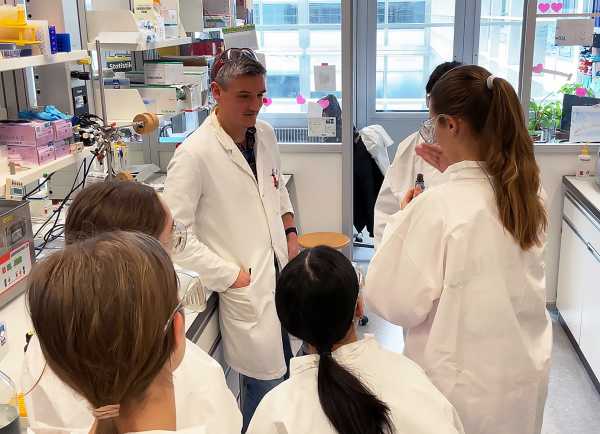
After the safety briefing, six groups, equipped with lab coats, goggles, and a volunteer guide, set off for the labs. Each group visited two labs from a pool of six. The topics covered various aspects of chemistry. In the organic laboratory of the Wennemers group, for example, the students followed an acid-base experiment with color changes and learned about devices such as the rotary evaporator, while the Mougel group showed various experiments on electrochemistry.
In the Reiher Group's laboratory, the students used a haptic device to observe how molecules change in a chemical process and literally felt the force acting on the atoms. In the physical chemistry lab, they used spectroscopy to investigate why Schweppes glows in the lights of a disco, and they observed equally fascinating glowing immune cells in the Halin group's confocal microscope. In the Steuer group's lab, they learned how to distinguish precious genuine rose oil from counterfeit.
The workshops were followed by informal discussion rounds with other researchers from D-CHAB. What advantages can chemistry provide in the health and environmental sectors, but also in everyday life? The students learned about the colorful nanocrystals of the Kovalenko Group, which can be used for smartphone screens or energy storage, the NCCR Catalysis program, which promotes sustainability in chemistry, and the techniques of liquid-liquid phase separation and microfluidics, which can be used for the efficient production of drugs and diagnostics. The students also learned about the role chemistry plays in brain tumor research, as well as in the development of diabetes drugs, RNA-based drugs, and the construction of an artificial heart. Of course, there was also time for personal questions posed to the researchers, and this Q&A would have continued had the event not ended at 5 pm.
The excursion into chemistry was a success, as the feedback confirmed. Perhaps some of the young visitors will return to the halls of D-CHAB one day. For the days following the event, however, they enjoyed the scents of vacation instead of the scent of lecture halls.
Thanks to our partners and supporters
The MINT Lernzentrum supported "Girls go Chemistry" with its broad network and expertise and took over the registration formalities for the event. The Learning Center is part of the ETH Competence Center for Teaching and Learning (EducETH) and aims to sustainably optimize school learning opportunities in the STEM fields. Together with teachers and researchers, teaching units and materials are developed and tested for their effectiveness. With the ETH Youth Academy, the STEM Learning Center also offers courses on mathematical and natural science topics for interested school students from grades 7 to 12.
Girls go Chemistry was actively supported by the Society for Women in Natural Sciences (WiNS) whose members and researchers took part in laboratory workshops and discussion panels at the event. WiNS was founded in 2014 and is now open to all female doctoral students and research assistants in the Department of Chemistry and Applied Biosciences (D-CHAB), the Department of Biology, the Department of Materials Science and Physics. The aim is to empower women in the natural sciences and work towards gender equality in the workplace and during studies. Learn more in this article.
Many thanks to the members of the Chemistry | Biology | Pharmacy Information Center, who actively supported the event e.g. as volunteer tour guides.

